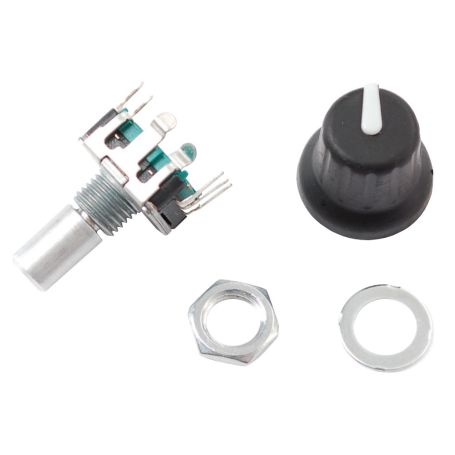Rotary Encoder 24PPR detent + switch + extra
Rotary Encoder
- 24 pulses per rotation (24 PPR)
- Detent rotation (maintained in place)
- with push button
- High quality
- Panel mount.
Payments are secured by LyraCollect, a French payment collection company.
It is possible to delivered to your home, to a pick-up point or picked up by appointment at MCHobby
We prepare, pack and ship your orders with great respect and care.
High quality 24 pulses rotative encoder - detent rotation
This rotary encoder is the wonder of wonders, it is a high quality 24-pulses encoder, with notch feel and professional finish. It is intended for mounting in a case or on a console but you can also plug it into a breadboard (you will just have to cut the two fixing tabs on the sides). This encoder is delivered with a very pleasant touch button (soft) with a position indicator (one line). Product with impeccable look and perfect finish. This encoder includes a push button that you can activate by pressing the button.
One side of the encoder has 3 pins (ground and two encoding pins) and the other side has two pins for the normally open push button.
Rotative encoders are very useful as a position sensor or selector and their shapes are similar to potentiometers. However, they don't work at all like potientiometers, so it's important to be aware of this difference! The rotative encoders can rotate continuously and are divided into 24 'segments'. Each segment has a notch feedback, and each clock movement (or anti-clock movement) causes the switch/contacts of the rotative encoder to open and close. There is no way to know the current position - instead, you should use a microcontroller to count the number of 'clicks' while you turn the button to the left or right.
If you need to know the angular position then a potentiometer will be a more appropriate choice.
Technical details
- Segments: 24
- Push Button: yes
- Encoder datasheet
- Button datasheet
Tutorial
- Use a rotative encoder (Arduino.cc, English)
- Control the audio volume via USB using a Trinket and an encoder (AdaFruit, English)







